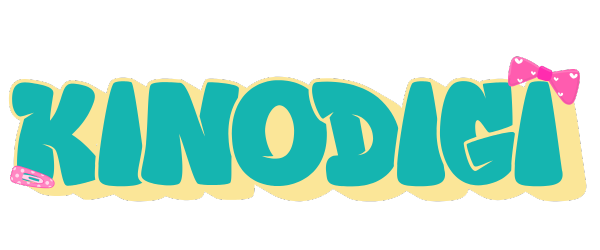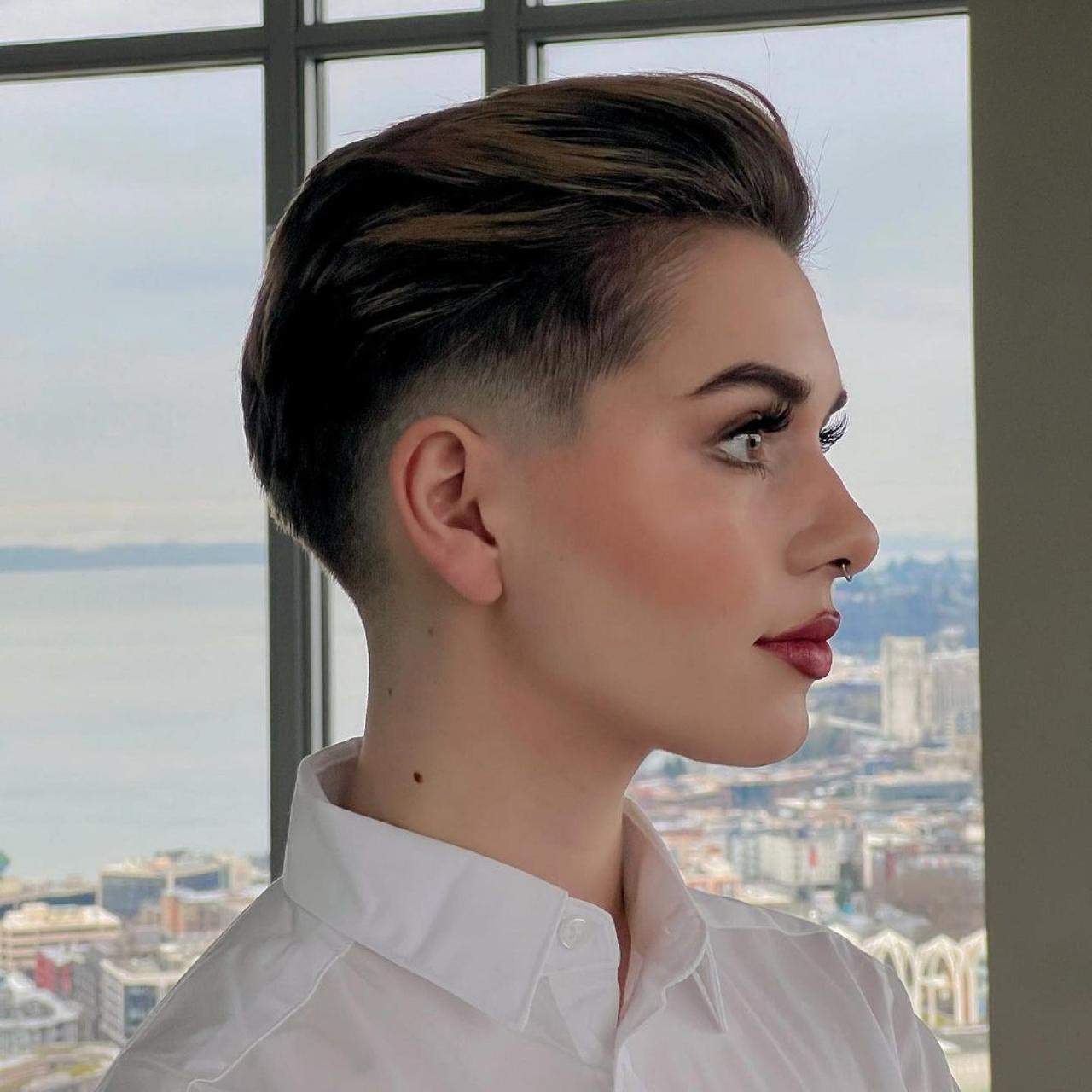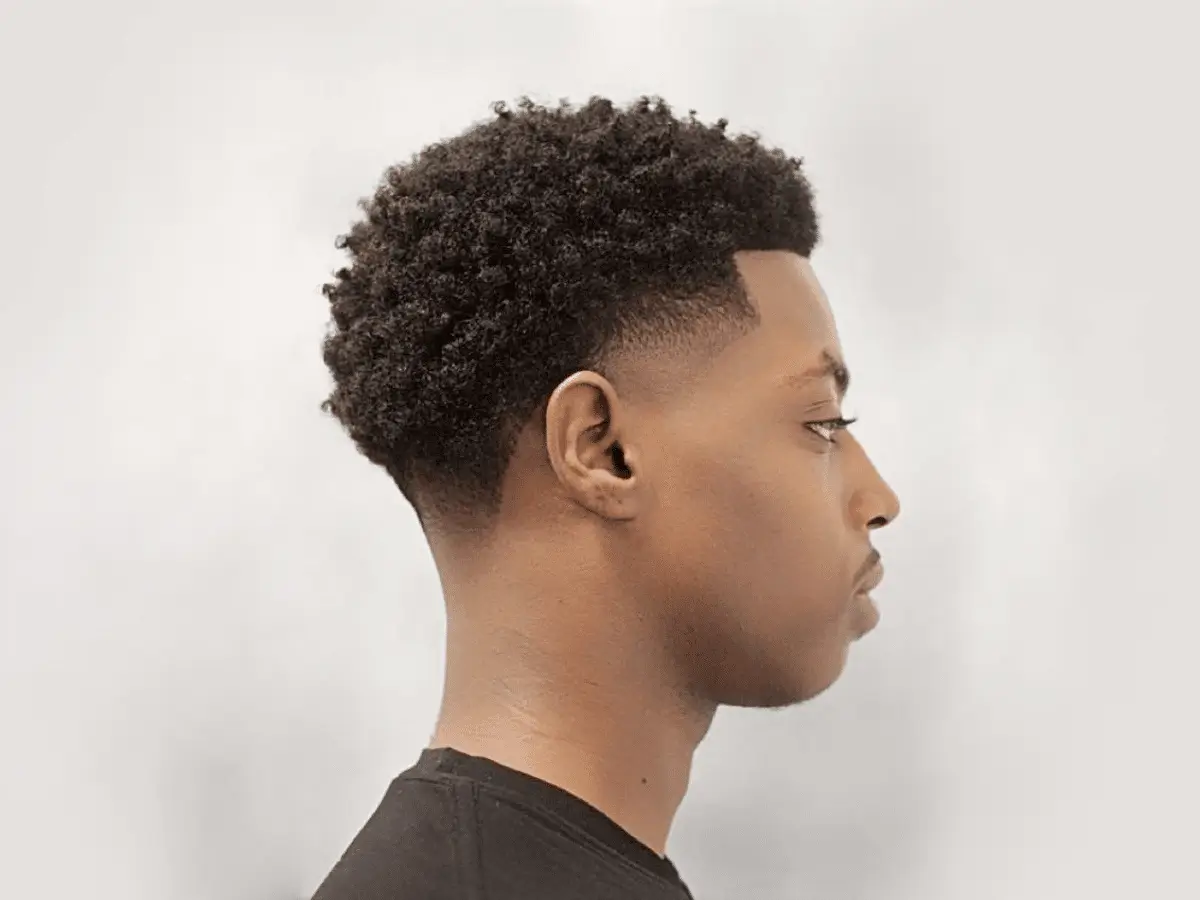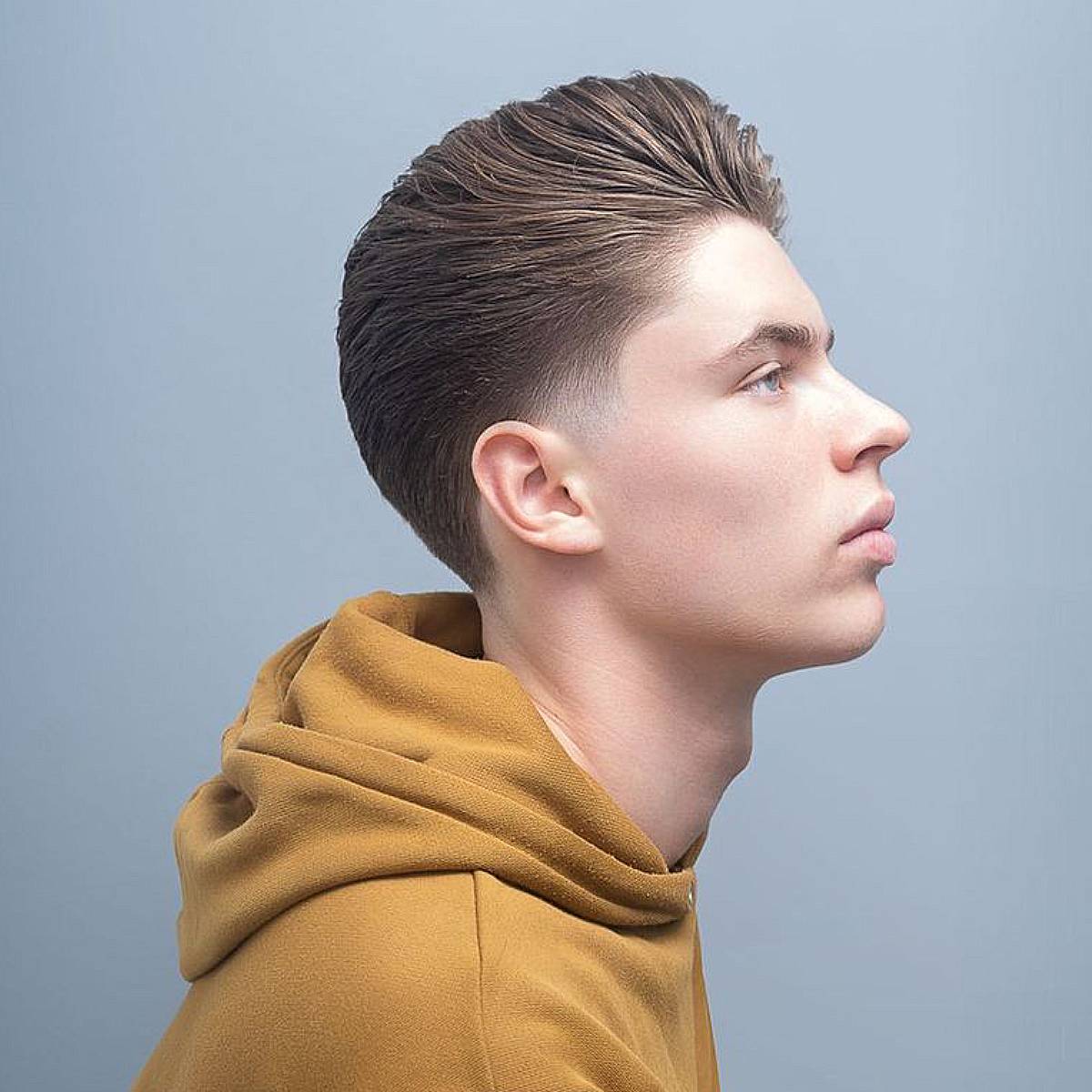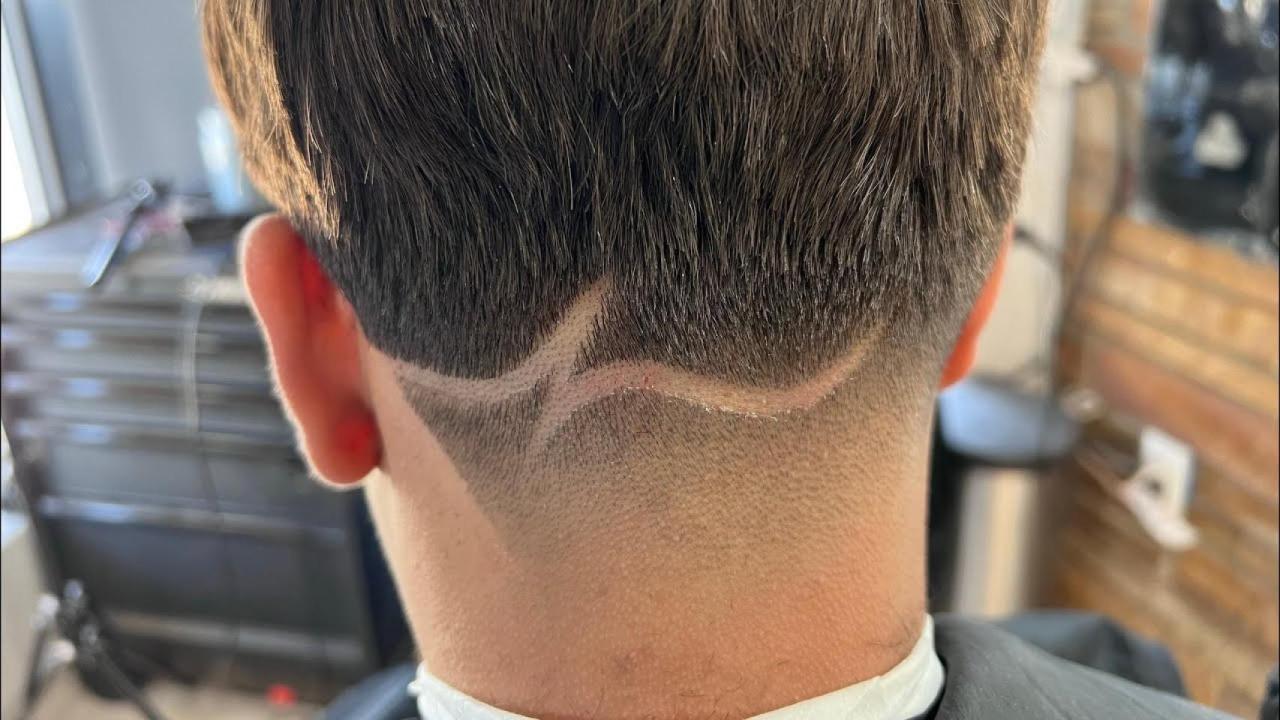The taper fade, a haircut characterized by its gradual blending from short to long hair, has become a timeless style that transcends generations. Its versatility and adaptability make it suitable for all hair types, offering a range of options to suit individual preferences.
From its origins as a practical military cut to its current status as a fashion statement, the taper fade continues to evolve, inspiring creativity and self-expression among barbers and clients alike.
Definition and Overview
A taper fade haircut is a type of fade haircut in which the hair is gradually shortened from the top of the head to the bottom, creating a tapered effect. Taper fades are popular because they are versatile and can be customized to suit different face shapes and hair types. They are also relatively low-maintenance, making them a good choice for busy people.
There are many different types of taper fades, including:
- Low taper fade: The fade starts low on the head, just above the ears.
- Mid taper fade: The fade starts at the middle of the head.
- High taper fade: The fade starts high on the head, just below the crown.
- Bald fade: The fade goes all the way up to the skin.
Hair Types and Maintenance
Taper fades are versatile and suitable for various hair types. However, the texture and density of hair can impact the appearance and longevity of the fade.
Fine Hair
- Fine hair can be more challenging to fade due to its lack of volume. A skilled barber can create a subtle fade that complements the hair’s texture.
- To maintain a fade on fine hair, regular touch-ups are recommended to keep the lines sharp and prevent the fade from growing out.
Thick Hair
- Thick hair provides a good base for a taper fade, as it holds its shape well. A barber can create a more dramatic fade with defined lines.
- Thick hair tends to grow faster, so more frequent haircuts may be necessary to maintain the fade.
Curly Hair
- Curly hair can be faded, but it requires a skilled barber who understands the unique texture of curly hair.
- To maintain a fade on curly hair, regular trims are important to prevent the curls from becoming unruly and compromising the fade’s shape.
Frequency of Haircuts and Touch-ups
The frequency of haircuts and touch-ups depends on several factors, including hair growth rate, desired fade style, and personal preference. Generally, touch-ups are recommended every 2-3 weeks to maintain the sharpness of the fade. Full haircuts may be necessary every 4-6 weeks to reshape the fade and address any overgrown areas.
Cultural and Social Impact
Taper fades have gained significant cultural significance and popularity in various communities worldwide. They have become a symbol of style, self-expression, and cultural identity.
In many urban areas, taper fades are associated with hip-hop culture and are often seen as a symbol of masculinity and confidence. They have also become popular among athletes and celebrities, further contributing to their cultural appeal.
Role in Fashion and Self-Expression
Taper fades offer a versatile and customizable style that allows individuals to express their creativity and individuality. The gradual transition from short to long hair creates a sleek and sophisticated look that can be tailored to different face shapes and hair textures.
Taper fades have influenced popular culture through their presence in movies, music videos, and fashion magazines. They have become a recognizable symbol of urban style and are often associated with confidence and individuality.
Related Haircuts and Styles
Taper fades share similarities and differences with other popular haircuts, such as undercuts and buzz cuts. Understanding these distinctions can help individuals make informed decisions about their desired hairstyle.
Undercuts
- Similar to taper fades, undercuts feature a gradual transition from short hair on the sides and back to longer hair on top.
- However, undercuts typically have a more defined and disconnected line between the short and long sections, creating a more dramatic contrast.
- Transitioning from a taper fade to an undercut involves growing out the top hair and cutting the sides and back shorter to create a sharper line.
Buzz Cuts
- Unlike taper fades and undercuts, buzz cuts involve cutting all hair to a uniform length, typically very short.
- This results in a clean and low-maintenance hairstyle that is often associated with military personnel.
- Transitioning from a taper fade to a buzz cut requires cutting all hair to the same length, which can be achieved gradually or abruptly.
Illustrations and Visuals: Taper Fade
To fully understand the intricacies of a taper fade, visual aids are invaluable. High-quality images can showcase the diverse styles and variations, while close-up shots reveal the meticulous blending and detailing that define a masterfully executed fade.
Interactive graphics and infographics offer an engaging and comprehensive way to illustrate the process of creating a taper fade. These visual representations break down the steps involved, from establishing the guideline to seamlessly blending the hair lengths, making it easy for both barbers and clients to visualize the desired outcome.
Taper fade, a popular haircut that seamlessly blends the hair from short to long, has evolved with the advent of ai hair style. AI algorithms now analyze facial features, hair texture, and preferences to create customized taper fade styles that complement individual appearances.
By leveraging AI’s precision and personalization, taper fade has become a more refined and flattering haircut, tailored to each person’s unique style.
Image Gallery, Taper fade
- Showcase a variety of taper fade styles, including high, mid, and low fades, with different hair textures and lengths.
- Provide close-up shots that highlight the gradual transition between hair lengths, showcasing the blending techniques.
- Include before-and-after images to demonstrate the transformative power of a taper fade.
Interactive Graphic or Infographic
Design an interactive graphic or infographic that illustrates the step-by-step process of creating a taper fade:
- Start with a detailed diagram of the head, showing the different sections and angles involved.
- Include step-by-step instructions with accompanying visuals, demonstrating how to establish the guideline, clipper the sides, and blend the hair.
- Incorporate interactive elements, such as sliders or clickable areas, to allow users to explore different variations and techniques.
Conclusion
The taper fade has gained immense popularity due to its versatility, adaptability, and stylish appeal. It offers a wide range of variations, allowing individuals to customize their look to suit their preferences and face shape. From subtle transitions to bold contrasts, the taper fade caters to diverse tastes and hair types.
Whether you’re looking for a classic, sophisticated look or a more edgy, modern style, the taper fade is an excellent choice. Its timeless appeal and versatility make it a favorite among both barbers and clients. Encourage your readers to explore the different variations of the taper fade and experiment with customizing their own unique style.
Concluding Remarks
Whether you’re seeking a classic look or a modern twist, the taper fade offers endless possibilities. Its versatility, low maintenance, and timeless appeal make it a haircut that will continue to grace the heads of style-conscious individuals for years to come.
